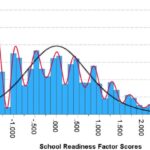Understanding division is a crucial math skill for children, but it’s often a challenging concept to grasp. This guide outlines when kids typically learn division, the steps involved, and why some might struggle.
Understanding the Basics of Division
Before diving into when kids learn division, it’s important to understand the components of a division problem:
- Dividend: The number being divided.
- Divisor: The number you divide by.
- Quotient: The answer to the division problem.
When Division is Introduced
Formal introduction to division typically begins in third grade. At this stage, children are introduced to the concept through:
- Repeated Subtraction: Teachers might start by having students repeatedly subtract the divisor from the dividend until they reach zero. This helps visualize how many times the divisor “fits” into the dividend. For example, 12 ÷ 3 can be represented as 12 – 3 – 3 – 3 – 3 = 0.
- Simple Division Problems: Students begin with dividing smaller numbers, often with single-digit divisors and two-digit dividends, where the quotient is greater than 10 (e.g., 24 ÷ 2 = 12).
Building on Division Skills
As students progress, division becomes more complex:
- Fourth Grade: Students tackle larger numbers, often dividing four-digit numbers by single-digit divisors (e.g., 3600 ÷ 9). They may also start working with remainders, understanding that not all division problems result in whole numbers.
- Fifth Grade: Division skills expand to include dividing larger numbers by two-digit and even four-digit divisors (e.g., 4800 ÷ 1200). This is also when students typically begin to work with decimals in division problems.
Why Some Kids Struggle with Division
Division can be challenging for several reasons:
- Weak Foundation in Multiplication: A solid understanding of multiplication facts is essential for mastering division, as they are inverse operations.
- Abstract Concept: Visualizing division can be difficult for some children. They may struggle to understand the relationship between the dividend, divisor, and quotient.
- Lack of Practice: Like any skill, consistent practice is crucial for mastering division. Without regular reinforcement, children may forget the concepts and procedures.
- Learning Differences: Some students may have learning differences like dyscalculia, which can make it harder to grasp mathematical concepts.
Helping Kids Learn Division
Parents and educators can support children learning division through various strategies:
- Hands-on Activities: Using manipulatives like blocks or counters can help children visualize the process of dividing and understand the concept of equal groups.
- Real-World Examples: Connecting division to everyday situations, like sharing cookies or dividing a pizza, can make it more relatable and engaging.
- Games and Apps: Numerous educational games and apps can make learning division fun and interactive.
- Personalized Support: If a child is struggling, providing individualized attention and targeted instruction can address specific challenges. This might involve working with a tutor or seeking support from the school.
Conclusion
Learning division is a gradual process that builds upon foundational math skills. While it’s typically introduced in third grade, mastery takes time and practice. By understanding the stages of learning division and providing appropriate support, parents and educators can help children develop confidence and competence in this essential mathematical skill.
